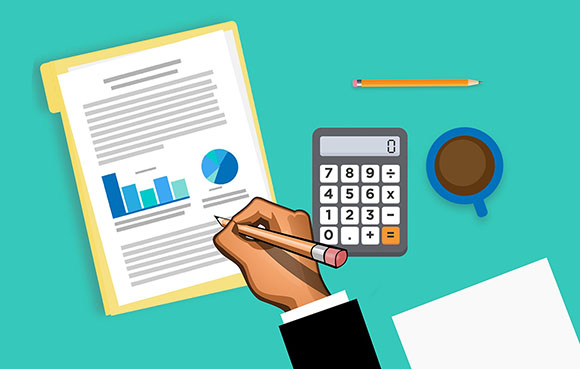Internal controls are the systems, rules, and procedures employed by an organization to ensure the accuracy of financial and accounting information, uphold accountability, and prevent fraud.
In addition to preventing employees from stealing assets or committing fraud, internal controls can help improve operational efficiency by improving the accuracy and timeliness of financial reporting.
A small business with thin margins has no room to deal with dishonest employees. Lack of firm policy and enforcement of sound practices is an invitation to lazy or criminal employees to rip you off.
Real example: Gas station with outdated cash register and missing enforcement of cash receipts, had regular cash shortages and ended up bankrupt.
Internal controls should be communicated to all personnel involved and monitored by management to ensure compliance and to determine if they are working properly.
Vital Importance of Internal Controls
Strong internal controls generally rely on segregation of duties, which prevents a single employee from both perpetrating and concealing fraud.
The most common form of con is misappropriation of assets, in which an employee, executive or owner of a company uses their position to steal from an organization.
Examples of fraud:
- falsified expense reports
- theft of services, inventory, time or company property
- purchases from fake vendors
- credit card abuse including personal expenses
- falsified sales reports to collect sales commissions
- falsified time sheets to get more pay for hours not worked
- owner pre signs cheques which get used by bookkeeper for personal purposes
- unreported personal use of company vehicles or equipment
- cheque forgery and tampering
- kickbacks or collusion, in which an employee receives payments from a third party in exchange for cash or other advantages
- financial statement fraud, in which an owner or employee alters balance sheets, profit & loss, or cash flow statements with the intention to deceive. This can be to attain loans or personal gain
- postponing expense recording to a later period so that current profits look higher
- inflating the value of an asset
Real example: Accountant, with more powers than he should have had, at a publishing company embezzled funds over several years by manipulating cash transactions. Eventually discovered and the employee terminated. It was a substantial loss to the company.
Manipulating Financial Records to Reduce Taxes
There are unlimited ways to manipulate the balance sheet or profit & loss statements. It seems like a national pastime to under report profits to pay less income tax.
There are basically two ways to reduce the amount of tax owing:
- Tax reduction through tax planning – these are the legal ways to reduce income taxes. There are a myriad of potential ways to reduce taxes on personal and corporate tax returns. For a business, these include filing tax returns on time to avoid penalties, income splitting with family members, deducting home office expenses or taking advantage of accelerated capital cost allowance (depreciation).
- Tax evasion which is a criminal offense – these are the illegal actions or schemes to avoid pay sales or income taxes. They typically involve concealing income or assets and then falsifying tax returns. For example, paying in cash a home improvement contractor for services performed but the contractor never reports the income.
A business must have in place internal controls to prevent illegal tax schemes.
Real example: A few years ago…Hotel had a popular pub which was a very profitable part of the operations. Most sales were in cash. The owner of the hotel manipulated the cash receipts to lower the reported sales then pocketed the unreported funds.
The CRA, seemingly not trusting hotel/pub owners, did a sting operation by posing as customers, purchasing beer, measuring how full the glass was and from that computed what the true sales should have been reported. The hotel owner was charged with tax fraud and then had to spend a small fortune in legal fees to stay out of jail.
Action Steps to Prevent Fraud and Embezzlement
- Be fully engaged as a business owner in the bookkeeping and accounting functions. Leaving it all up to the bookkeeper or accountant is a huge mistake.
- Implement checks and balances to ensure no single employee has complete control.
Cash Control Procedures

- Preparing timely monthly bank reconciliations is a key control over cash. This basic process can help prevent and locate unauthorized uses of cash in a timely matter.
- The owner of the business or as delegated opens and reviews the bank statement, cancelled checks, bank charges and unusual items.
- All staff that handle money or have bank withdrawal access should be bonded.
- All bank disbursements (cheques, transfers and direct payments) over a certain amount such as $500 require owner signature.
- Blank checks should not be signed and kept for future use, even if held in a locked cabinet.
Accounts Receivable Best Practices
- Do credit checks before granting credit.
- Accounts receivable aging reports should be reviewed monthly by management. Any amounts in the “over 30-day” column should be explained and followed up. If a customer is a slow payer, consider not working with them or require advance payment.
- Receivable write-offs should be authorized and approved, in writing, by the owner.
- Use numbered invoices and account for all sales.
Purchasing and Accounts Payable Control is Important
- Purchase orders should be utilized when making purchases
- All vendor invoices and other appropriate documentation such as purchase orders, receiving reports, etc., should be approved for payment by appropriate personnel (usually the owner or manager).
- Vendor statements are to be reconciled from posted accounts payable invoices. Payments are made against reconciled vendor statements.
- Vendors offering prompt discounts are to be processed as a priority. The decision to take the discount is made by management based on cash flow.
- Unused materials from a completed project are to be returned to the original vendor for credit.
- As applicable, do job costing. All project (customer jobs) related vendor invoices are posted to specific jobs.
- Credit card purchases should be approved by management or owner.
- Require proof of insurance including workers compensation from any subcontractors and monitor the expiration of such insurance.
Payroll/Human Resource Functions

Payroll costs are typically a significant expense for any business. Falsified payroll records are costly to a business. Steps to ensure the integrity of payroll:
- Do background checks and drug testing on employees
- Require verifiable banking information and do direct deposits of paychecks
- All “additional pay” such as travel time, overtime or meal allowance should be approved by the appropriate personnel
- Compare payroll costs to estimated project costs or budgets
- Consider mandatory vacations to detect deception as fraud situations are dependent on the employee being at work to continue the cover-up.
Budget Management is Key to Solvency
Budgets at both project and overall corporate level should be prepared and compared to actual results throughout the year—at a minimum monthly.
- Not acting in a timely manner can result in unexpected losses at the end of the fiscal year.
- Large or unexplained variances should be researched on a regular basis to ensure timely action is taken.
- Regularly review original contract costs to invoiced contract costs to determine if there are unexplained variations.
Summary
A key benefit of strong internal controls is to help strengthen an organization’s accounting procedures and systems, which in turn, helps detect and prevent losses, embezzlement and fraud.
By implementing and enforcing internal controls, owners and management are engaged in the business’s overall profitability which is vital to a company’s solvency, stability and longevity.
Developing and enforcing strong internal controls are key to business success.
Creative Commons Attribution: Permission is granted to repost this article in its entirety with credit to Doug Hay & Associates and a clickable link back to this page.





